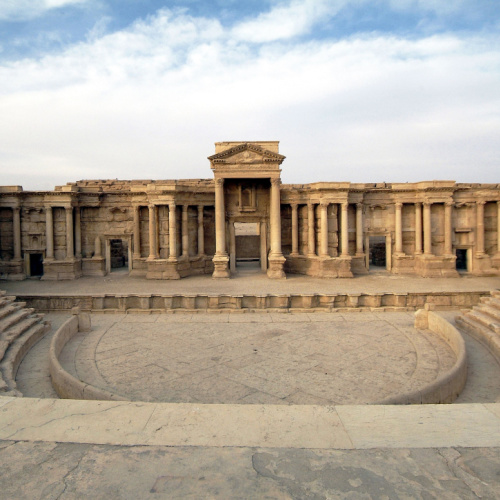
trezordia/Shutterstock
When Is the Best Time to Visit Syria?
The best time to visit Syria is during the shoulder seasons of spring (March to May) and autumn (September to November). During these months, the weather is generally mild and sunny, with fewer crowds and lower prices than during the peak summer (June to August) season.
Here are some of the benefits of visiting Syria during the shoulder seasons:
- Mild weather: Syria has a Mediterranean climate, with hot, dry summers and mild, wet winters. The shoulder seasons offer the most pleasant weather, with average temperatures ranging from 15 to 25 degrees Celsius (59 to 77 degrees Fahrenheit). This makes it ideal for sightseeing, exploring, and enjoying the outdoors.
- Smaller crowds: The shoulder seasons are less crowded than the peak summer season, so you’ll be able to enjoy Syria’s popular tourist attractions without having to deal with large crowds. This is especially important if you’re visiting popular destinations like Damascus, Palmyra, and Aleppo.
- Lower prices: Prices for flights, accommodation, and activities are generally lower during the shoulder seasons than during the peak summer season. This means you can save money on your trip without having to sacrifice quality.
Here are some specific examples of how you can enjoy the most of Syria during the shoulder seasons:
- Spring: Spring in Syria is a beautiful time to visit, with the wildflowers in bloom. Popular activities during this time of year include visiting ancient ruins, exploring the desert, and attending traditional festivals.
- Autumn: Autumn in Syria is another beautiful time to visit, with the leaves changing color. Popular activities during this time of year include hiking in the mountains, visiting villages, and enjoying the cooler weather.
Please note: Syria is currently in a state of civil war, and it is important to check the latest travel advice before planning a trip. If you do decide to visit Syria, it is important to be aware of the risks and to take all necessary precautions.
 Average Temperatures by Month
Average Temperatures by Month
|
Jan |
Feb |
Mar |
Apr |
May |
Jun |
Jul |
Aug |
Sep |
Oct |
Nov |
Dec |
| Fahrenheit |
49°
|
53°
|
61°
|
71°
|
79°
|
88°
|
94°
|
94°
|
87°
|
76°
|
63°
|
53°
|
| Celsius |
9°
|
12°
|
16°
|
22°
|
26°
|
31°
|
34°
|
34°
|
30°
|
24°
|
17°
|
12°
|
Climate in Syria
Summer Season in Syria
Syrian summers are hot and dry, particularly in the inland and eastern desert regions, with temperatures often rising significantly. The coastal areas experience milder temperatures due to the Mediterranean's moderating influence, but still with warm to hot conditions. Summer is characterized by long days of intense sunlight and minimal rainfall, making it less ideal for outdoor activities during peak daytime hours.
Rainy Season in Syria
The rainy season in Syria brings most of the country's annual rainfall, especially important in the western and coastal regions. This period sees sporadic rainfall, which can vary in intensity and is crucial for agriculture and replenishing water sources. The eastern desert areas receive much less precipitation.
Winter Season in Syria
Winters in Syria are generally mild and wet in the coastal regions, with cooler temperatures and frequent rainfall. In contrast, the inland and desert areas experience colder temperatures but with less precipitation. Snowfall can occur in the mountainous regions. Winter is characterized by shorter days and is a time when the natural landscape is revitalized by the seasonal rains.
Our Recommendations
| Destination |
Jan |
Feb |
Mar |
Apr |
May |
Jun |
Jul |
Aug |
Sep |
Oct |
Nov |
Dec |
| Syria |
 |
 |
 |
 |
 |
 |
 |
 |
 |
 |
 |
 |






